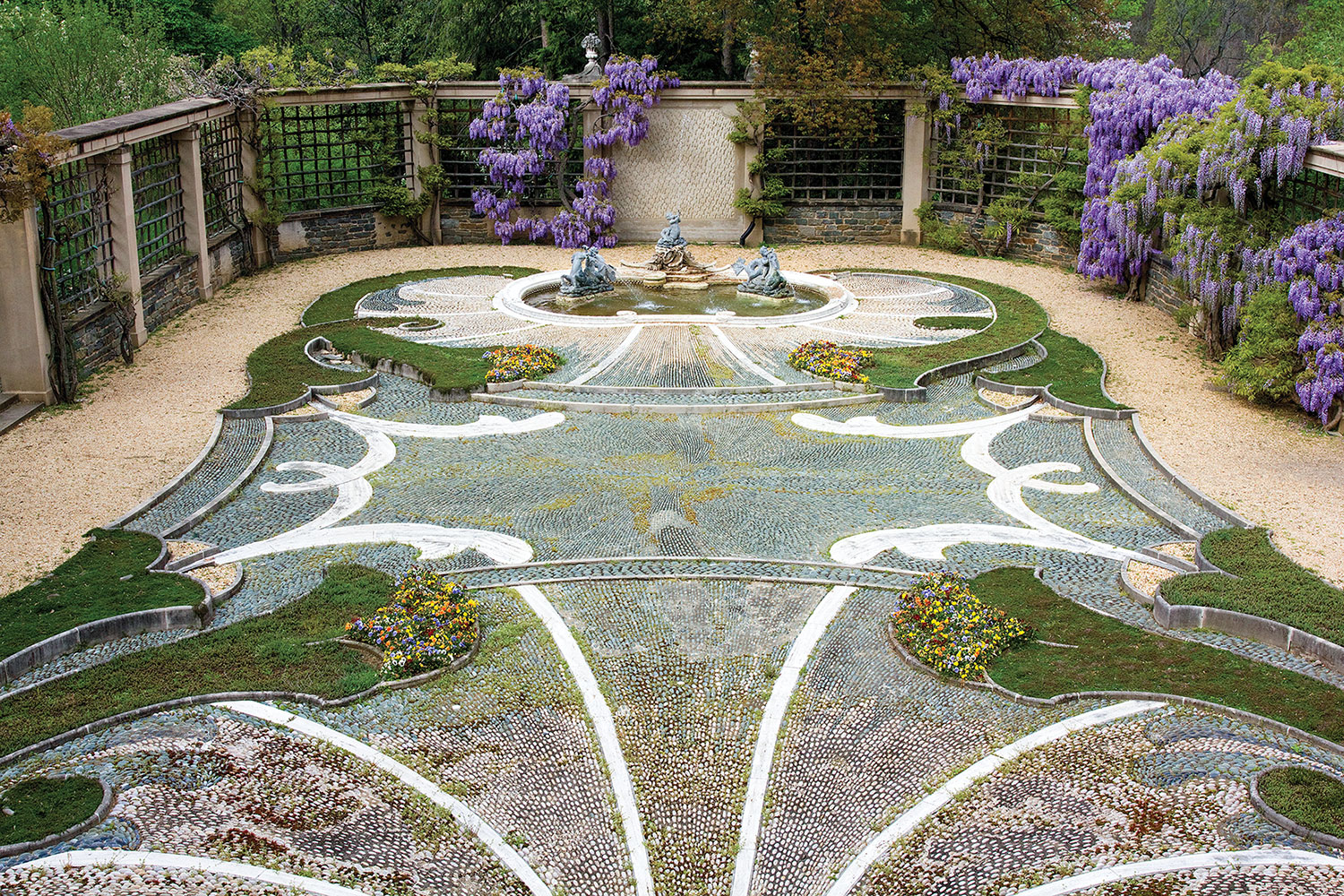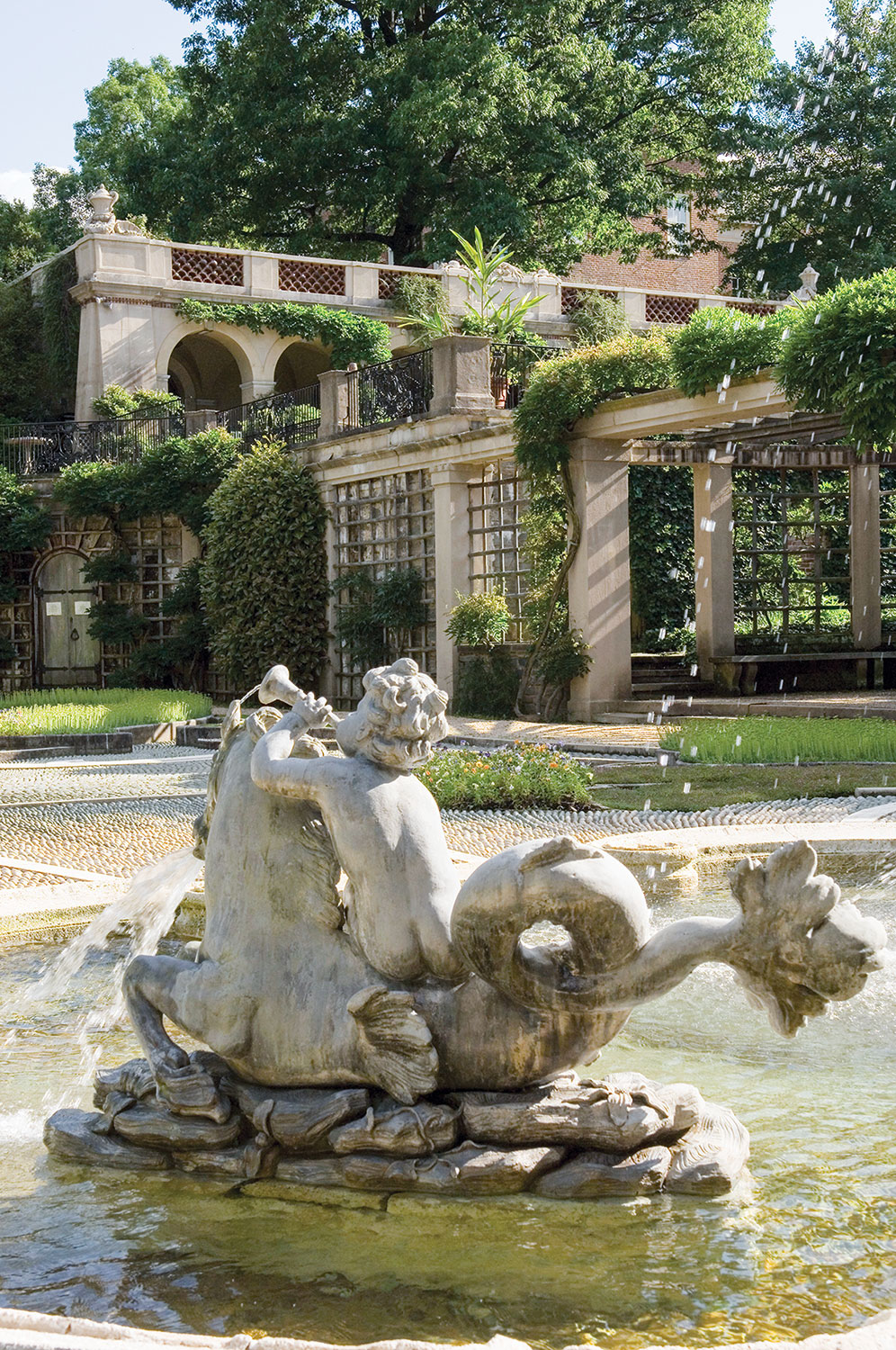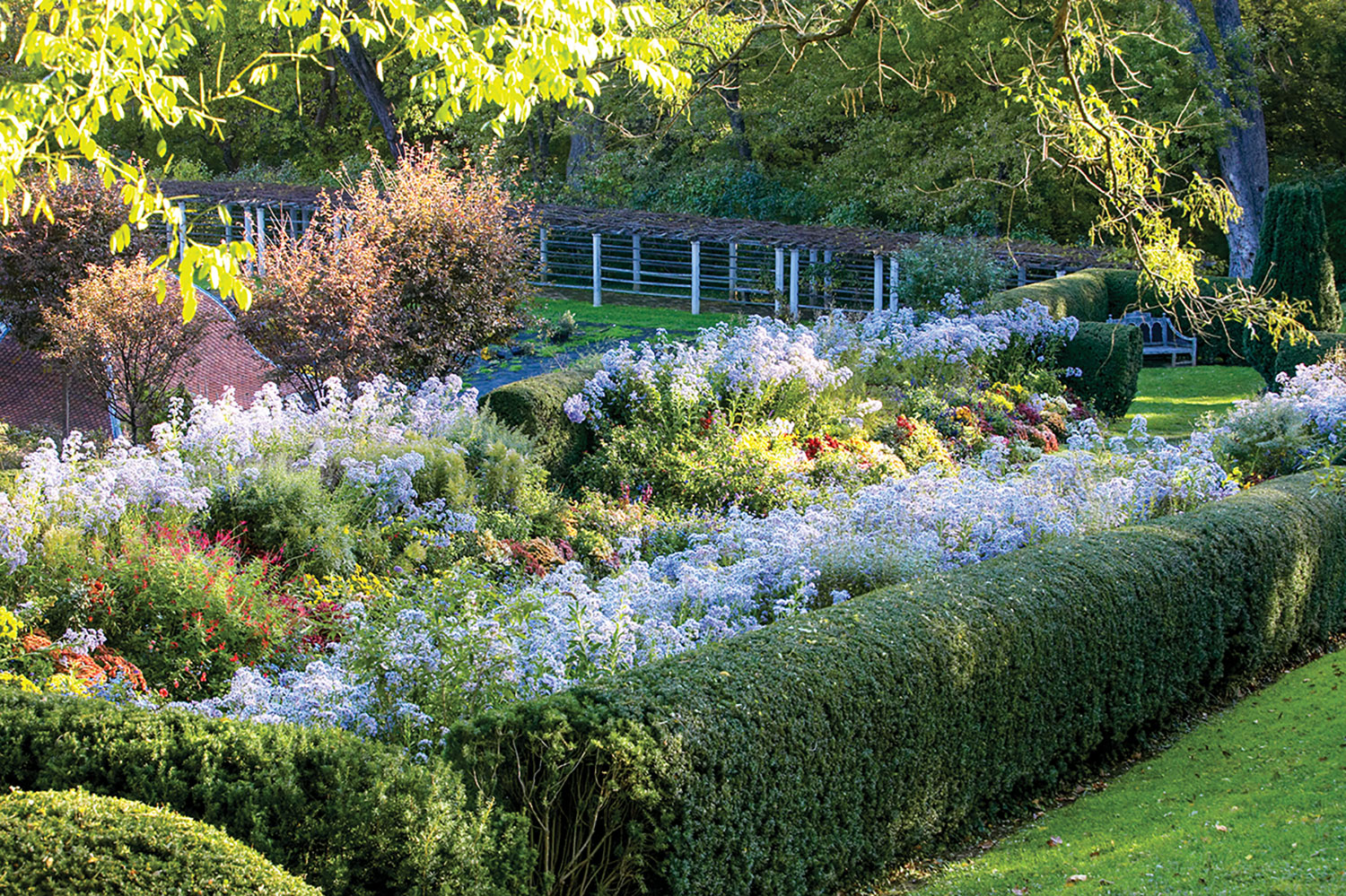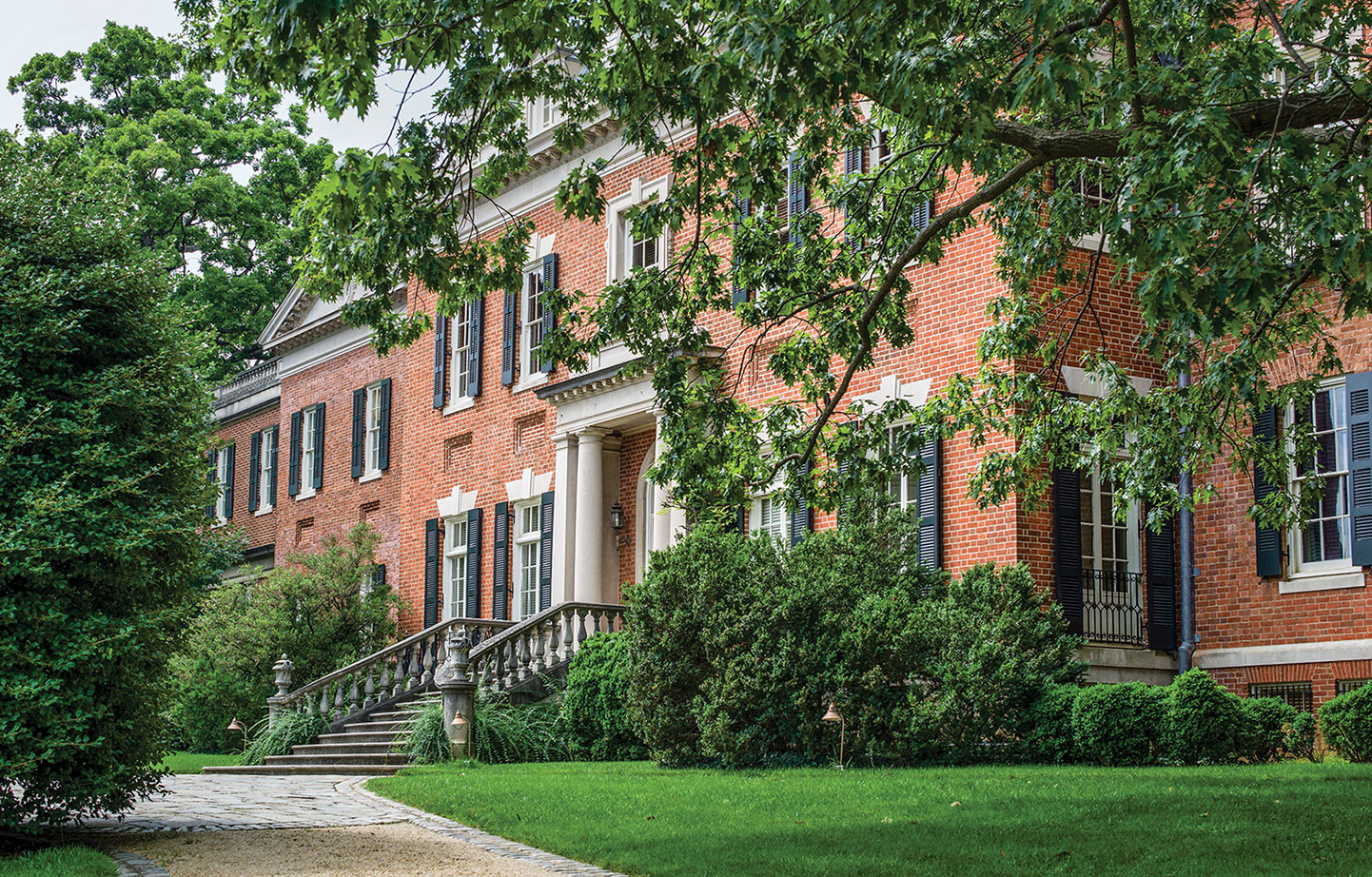
The urn terrace designed by Beatrix Farrand features an urn modeled on an 18th-century terra-cotta one that Mildred and Robert Bliss purchased in France. Photo by Spencer Lenfield/Dumbarton Oaks
Nearly 100 years later, the gardens do indeed stand testament that Farrand, the only female founding member of the American Society of Landscape Architects, adeptly achieved her desire. The gardens, sculpted out of a steeply sloping property in the heart of Georgetown, continue to thrive and flourish, a verdant oasis of serenity in striking contrast to the bustle of nearby Dupont Circle or the cacophony of political posturing on Capitol Hill.

The former tennis court was transformed into a pebble garden by Farrand’s protégé, Ruth Havey. Mexican stones form the rocaille mosaic pattern, while the wisteria-draped walls and stone benches were part of Farrand’s original design. Photo by Charles Kogod/Getty Images
In 1920, Mildred and her husband, Robert Woods Bliss—a Foreign Service Officer who served in a number of posts in Europe and ultimately as ambassador to Argentina—purchased Dumbarton as their Stateside residence and embarked on a meticulous renovation and expansion of the house, while engaging Farrand to create a series of gardens on the 54-acre property.

Detail of the fountain in the pebble garden. Photo by Chris Parker/Getty Images
The Blisses, who were also passionate collectors and patrons of the arts, were primarily at home in spring and fall; thus the gardens were designed to be particularly enjoyed during those seasons, although with plenty of areas of interest year-round.

In the herbaceous border, inspired by the work of Gertrude Jekyll, the beds are a mix of perennials and annuals in pastel shades framed by yew hedges. Photo by Joe Mills/Dumbarton Oaks
Today, visitors are more likely to have on walking shoes suitable for exploring. In 1940, the Blisses gifted the house and 16 1⁄2 acres of the upper gardens to Harvard University, Robert’s alma mater. It now serves as a museum, research center, and garden open to the public. Kavalier encourages people to let their feet be their guide.

The Blisses gifted their 1801 Federal-style house to Harvard University in 1940. The original urn that once stood on the urn terrace (refer to first photo) is now housed in the home’s rare book library. Photo by Spencer Albert Knapp/Alamy Stock Photo
—Jonathan Kavalier
By Karen Carroll




